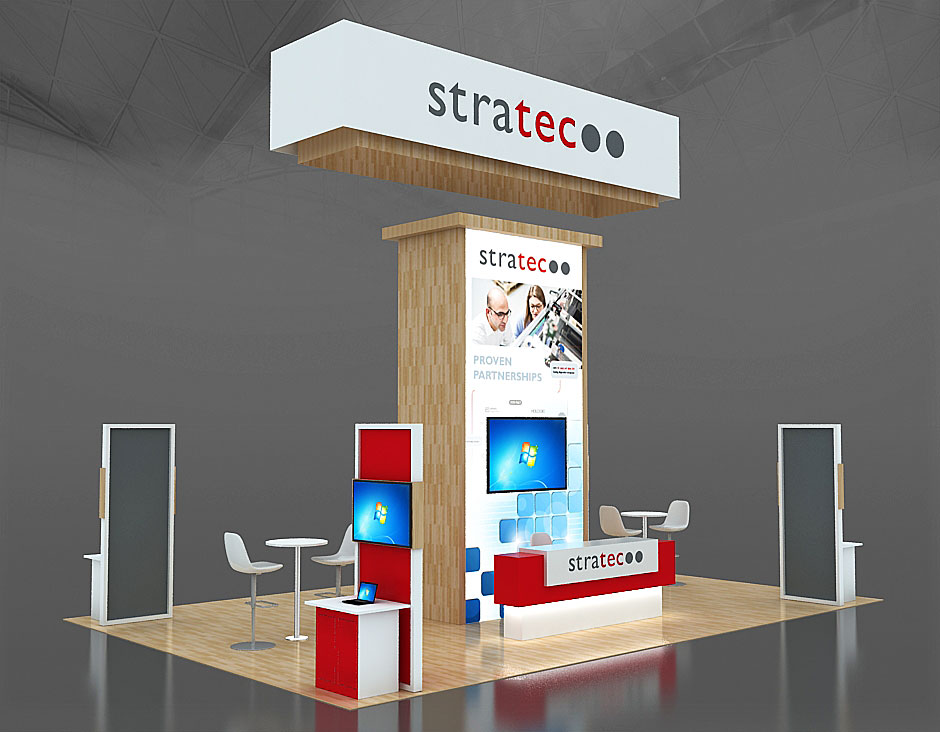Planning for a trade show can be an exciting yet daunting task. From designing your booth to organizing product shipments, there are many details to coordinate. Proper planning is crucial to ensure your exhibition booth construction and later trade show participation is smooth, efficient, and impactful. Here are some top tips for planning your trade show booth installation, dismantling, and shipping:
Choose the Right Booth Size and Layout:
One of the first steps is determining the appropriate booth size and layout for your needs. Factors to consider include:
Amount of products/services you need to showcase: Make sure you have enough space to highlight key offerings but not so much space that the booth looks sparse.
Interactivity: Product demos or areas for meetings/charging stations require more space.
Staffing: The booth needs to accommodate your team working the event.
Budget: Booth rental, furnishings, and utilities all depend on size. Go bigger if the budget allows you to stand out.
Location preferences: Corners and Perimeter spaces are premium.
Once you’ve determined the ideal footprint, start designing the layout of your display for trade show. Map where everything will go while maximizing space and flow. Appoint a point person to oversee booth design and logistics.
Schedule Booth Installation:
Most custom trade show exhibit designs allot an installation window from move-in time until the show opens. This is when you’ll construct your booth so it’s ready for attendees at opening.
Know the schedule: Closely review move-in/move-out times and Freeman/union labor guidelines. Missing your window means paying overtime fees.
Hire a service contractor: Renting installation labor through the show’s service contractor is easiest. Just provide your floor plan and inventory.
Or use your labor: You can save money using your staff or hired installers. Make sure they’re qualified and insured.
Supervise the process: Have a project manager on-site to oversee the installation and problem-solve.
Allow enough time: Installation often takes longer than expected. Build in a buffer before the show opens.
Get oriented: Once the booth is installed, walk it to check sight lines, product placement, and branding visibility, and make any tweaks.
Coordinate Product Shipments:
Shipping your trade show booth design ideas, products, and materials requires planning:
Use the official show freight carrier: This ensures delivery to your booth space. Confirm shipment deadlines.
Package shipments properly: Use sturdy crates and pallets that are easy to unpack. Label clearly.
Consolidate shipments: This saves money. Ship display materials and booth inventory together.
Arrange return shipping upfront: Schedule pickup and return delivery ahead of time.
Obtain certified weight tickets: This documents your shipment weight and aids billing accuracy.
Familiarize with union unloading rules: Many venues mandate union labor for move-in/out, with associated costs.
Inspect deliveries immediately: Note any missing or damaged items and file claims promptly.
Staff Your Booth:
Your people will make or break the attendee experience:
Have enough staff: Schedule adequate booth coverage for all open hours. Factor in breaks.
Define roles: Each staff member should have clear responsibilities for engaging visitors.
Train your team: Educate them on company/product messaging to convey. Conduct role plays and dry runs.
Set expectations: Emphasize professionalism in conduct and appearance—review booth etiquette.
Provide support: Have seating, water, and snacks available. Log breaks and rest areas for recharging.
Foster team spirit: Morning team huddles help energize and focus your staff daily.
Review goals daily: Assess leads, and feedback and make adjustments to improve subsequent days.
Make Dismantling Smoother:
The exhibition closing signals the start of the 40×40 exhibit booth teardown. Smart preparation minimizes headaches:
Know the move-out schedule: Clarify if there’s a staggered floor exit or fixed dismantle time.
Pre-pack during slower periods: You can safely pack brochures, accessories, and smaller items during the final show day.
Label packing materials clearly: Use color codes, and large markings to identify what goes where.
Organize manpower and tools: Assign staff roles for efficient takedown and loading. Have the necessary tools handy.
Check furnishings for damage: Note any repairs needed that you could be charged for.
Refurbish and protect components: Clean and refurbish reusable elements like graphics, and fixtures. Protect delicate parts.
Watch loads carefully: Oversee loading to ensure all booth properties and freight go out together securely.
Attend to Post-Show Details:
Finalize outstanding items for a successful show wrap:
Coordinate outbound shipping: Reconfirm pickup times and final weights. Get tracking numbers and ETAs.
Return rentals: Don’t forget to send back items you’ve rented like AV equipment, furnishings, and more.
Evaluate leads and contacts: Quantify leads captured. Enter into CRM and assign for prompt follow-up.
Gather feedback: Survey your team members on their show experience and feedback received. Identify wins and improvements.
Review metrics: Assess performance against goals for sales leads, media coverage, product feedback, branding, etc.
Account for leftover inventory: Decide which show collateral, product samples, and swag to save or replenish.
Update show planner: Record notes and key details while fresh for planning future shows.
CONCLUSION:
With proper preparation, you can have a smooth and effective trade show booth construction long beach, installation, dismantling, and shipping process. Maintain detailed notes and checklists for each stage, and coordinate closely with venue staff. Your proactive planning will pay off in an impactful trade show presence that drives brand awareness and business growth.

